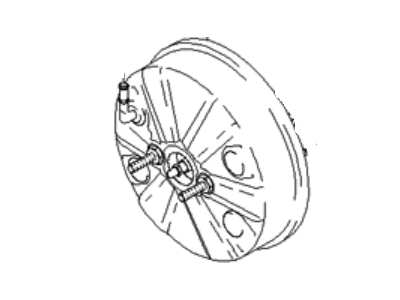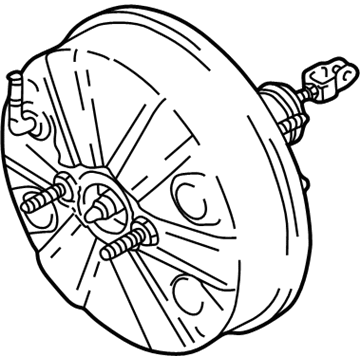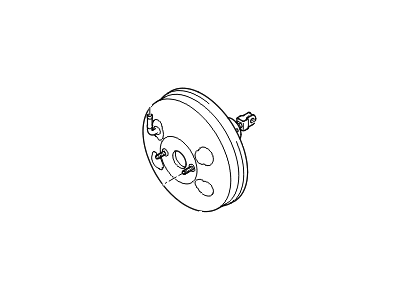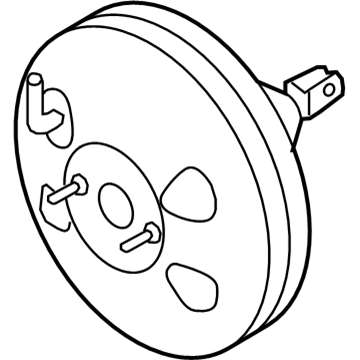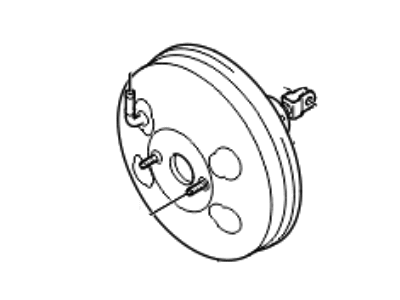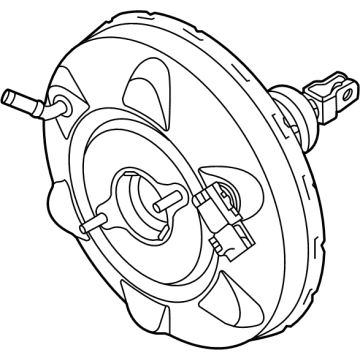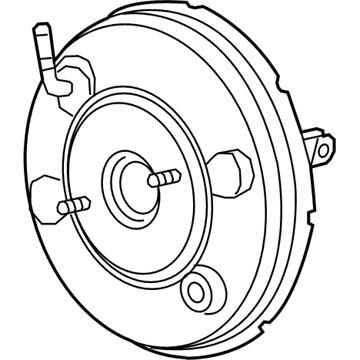×
- Hello
- Login or Register
- Quick Links
- Live Chat
- Track Order
- Parts Availability
- RMA
- Help Center
- Contact Us
- Shop for
- Hyundai Parts
- Hyundai Accessories


My Garage
My Account
Cart
Genuine Hyundai Elantra Brake Booster
Brake Power Booster- Select Vehicle by Model
- Select Vehicle by VIN
Select Vehicle by Model
orMake
Model
Year
Select Vehicle by VIN
For the most accurate results, select vehicle by your VIN (Vehicle Identification Number).
22 Brake Boosters found
Hyundai Elantra Booster Assembly-Brake
Part Number: 59110-2D020$570.68 MSRP: $808.84You Save: $238.16 (30%)Ships in 1-3 Business DaysHyundai Elantra Booster Assembly-Brake
Part Number: 59110-2D010$570.68 MSRP: $808.84You Save: $238.16 (30%)Ships in 1-3 Business DaysHyundai Elantra Booster Assembly-Brake
Part Number: 59110-29000$681.91 MSRP: $966.48You Save: $284.57 (30%)Ships in 1-3 Business DaysHyundai Elantra Booster Assembly-Brake
Part Number: 59110-28300$558.92 MSRP: $792.16You Save: $233.24 (30%)Ships in 1-3 Business DaysHyundai Elantra Booster Assembly-Brake
Part Number: 59110-2D200$570.68 MSRP: $808.84You Save: $238.16 (30%)Ships in 1-3 Business DaysHyundai Elantra Booster Assembly-Brake
Part Number: 59110-2H300$570.68 MSRP: $808.84You Save: $238.16 (30%)Ships in 1-3 Business DaysHyundai Elantra Booster Assembly-Brake
Part Number: 59110-2H350$570.68 MSRP: $808.84You Save: $238.16 (30%)Ships in 1-3 Business DaysHyundai Elantra Booster Assembly-Brake
Part Number: 59110-F2000$570.68 MSRP: $808.84You Save: $238.16 (30%)Ships in 1-3 Business DaysHyundai Elantra Booster Assembly-Brake
Part Number: 59110-2D300$442.53 MSRP: $627.21You Save: $184.68 (30%)Ships in 1-3 Business DaysHyundai Elantra Booster Assembly-Brake
Part Number: 59110-2H000$442.53 MSRP: $627.21You Save: $184.68 (30%)Ships in 1-3 Business DaysHyundai Elantra Booster Assembly-Brake
Part Number: 59110-2H050$442.53 MSRP: $627.21You Save: $184.68 (30%)Ships in 1-3 Business DaysHyundai Elantra Booster Assembly-Brake
Part Number: 59110-2D320$539.92 MSRP: $765.24You Save: $225.32 (30%)Ships in 1-3 Business DaysHyundai Elantra Booster Assembly-Brake
Part Number: 59110-F2450$570.68 MSRP: $808.84You Save: $238.16 (30%)Ships in 1-3 Business DaysHyundai Elantra Booster Assembly-Brake
Part Number: 59110-29001$681.91 MSRP: $966.48You Save: $284.57 (30%)Ships in 1-3 Business DaysHyundai Elantra Booster Assembly-Brake
Part Number: 59110-3X000$570.68 MSRP: $808.84You Save: $238.16 (30%)Ships in 1-3 Business DaysHyundai Elantra Booster Assembly-Brake
Part Number: 59110-AA240$342.41 MSRP: $485.31You Save: $142.90 (30%)Ships in 1-3 Business DaysHyundai Elantra Booster Assembly-Brake
Part Number: 59110-AB300$353.34 MSRP: $500.79You Save: $147.45 (30%)Ships in 1-3 Business DaysHyundai Elantra Booster Assembly-Brake
Part Number: 59110-AB460$353.34 MSRP: $500.79You Save: $147.45 (30%)Ships in 1-3 Business DaysHyundai Elantra Booster Assembly-Brake
Part Number: 59110-F3000$353.34 MSRP: $500.79You Save: $147.45 (30%)Ships in 1-3 Business DaysHyundai Elantra Booster Assembly-Brake
Part Number: 59110-3X900$442.53 MSRP: $627.21You Save: $184.68 (30%)Ships in 1-3 Business Days
| Page 1 of 2 |Next >
1-20 of 22 Results
Hyundai Elantra Brake Booster
If you are looking for affordable high-quality OEM Hyundai Elantra Brake Booster, then you have come to the prime place. Our website provides a large amount of genuine Hyundai Elantra Brake Booster at unbeatable prices. All our parts come backed with the manufacturer's warranty.
Hyundai Elantra Brake Booster Parts Questions & Experts Answers
- Q: How to Inspect and Maintain the Brake System and Brake booster on Hyundai Elantra?A:In addition to the prescribed intervals, the brakes must be inspected when the wheels come off and any time there is suspicion of a defect. One or more of these symptoms could indicate possible brake system defects: pulling of the vehicle to one side while pressing on the brake pedal; noise coming from the brakes that sounds like a squeak or scraping sound; excessive travel in the brake pedal while braking-this is known as pedal pulsation; when applying pressure on brake pad, it feels like you are pumping up air instead of braking; this can be caused by leaks in brake fluid usually found inside tire or wheel. The first step in inspecting brakes involves loosening wheel lug nuts and raising the vehicle securely with jackstands. Remove wheels. There are two pads per caliper for front and rear disc brakes. Check pad thickness by looking at each end of caliper, and through inspection window in caliper body. If lining material measures less than required, replace pads. In case determination of precise thickness is hard remove caliper(s) plus pads should be taken out for further examination. Clean them using brake cleaner and re-measure their thickness. Calculate disc thickness still has service life remaining by utilizing micrometer. Inspect all brake lines and hoses before installing wheels for damage, wear, deformation, cracks, corrosion leakage bends twists being careful not to twist them excessively during installation process.To examine rear drum brakes ensure that parking break is released then remove drake drums.Clean braked up assembly noting its lining material thickens at both front and rear shoes.Makesureallbrakeassemblies are connectedby springandarein goodcondition.Lightlywipe insidesofdrums checkingforcracks,scoremarks deepscratchesandhardspots.If suchabnormalitiesarefound repeatprocedureonremainingwheel.Optimally perform these tests from driver's seat to check whether booster works correctly.Ifyou applythebrakesbutthey workdifferently,thenthebrake booster hasfailed. Slowly pull up the parking brake and count how many clicks it takes to get all the way up. If you hear exactly that number of clicks, then the adjustment is right. Another way to check operation of a parking brake is on a steep hill with vehicle parked and with transaxle in Neutral.Parking brake is not adjusted enough if car rolls when parking brake is applied.
Related Hyundai Elantra Parts
Browse by Year
2023 Brake Booster 2022 Brake Booster 2021 Brake Booster 2020 Brake Booster 2019 Brake Booster 2018 Brake Booster 2017 Brake Booster 2016 Brake Booster 2015 Brake Booster 2014 Brake Booster 2013 Brake Booster 2012 Brake Booster 2011 Brake Booster 2010 Brake Booster 2009 Brake Booster 2008 Brake Booster 2007 Brake Booster 2006 Brake Booster 2005 Brake Booster 2004 Brake Booster 2003 Brake Booster 2002 Brake Booster 2001 Brake Booster 2000 Brake Booster 1999 Brake Booster 1998 Brake Booster 1997 Brake Booster 1996 Brake Booster 1995 Brake Booster 1994 Brake Booster 1993 Brake Booster 1992 Brake Booster 1991 Brake Booster
